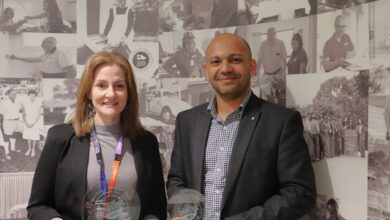A team approach is key
One-on-one training is improving aged care staff’s confidence and knowledge of medicines. Darragh O Keeffe reports.
Residential aged care homes in South Australia and Victoria are involved in a new project to promote the most effective use of “when required” medicines.
Often, residents receive when-required medications in line with an altered health status or changes in existing medical conditions. These are prescribed by a GP for an individual resident and may be nurse initiated for some medications.
The TEAM Aged Care project is focussing on providing educational training, and promoting evidence based educational resources, to aged care staff.
Nursing staff in 10 facilities across the southern Fleurieu Peninsula and Kangaroo Island in South Australia and in Wangaratta, Maryborough and North Fitzroy in Victoria are being provided with one-on-one training. The participating facilities are a cross section of metropolitan, rural, remote and culturally specific.
The 22-month project aims to assist nurses and carers to further develop their knowledge and confidence in using when required medicines in the four key areas of pain, constipation, behaviours of concern and sleep.
“Giving staff ongoing access to the latest, evidence-based information and resources about pain management and many common medicines that residents might need, will boost their skills, improve the quality of clinical care and minimise the risks of unnecessary side effects,” says Sue Edwards, TEAM project manager at General Practice Network South.
Edwards also says the project aims to identify the best ways to provide information and training to staff.
The project involves educational visiting, also called academic detailing, to aged care staff on an individual basis.
The goal of educational visiting is to influence staff behaviour to be consistent with best practice evidence to optimise outcomes from medicines and minimise harms.
“The idea of educational visiting is to provide the individual with one-on-one training. Through this, you are meeting the individual needs of the staff,” Edwards says.
“This is very important as staff can have differing levels of skills and knowledge. It allows for a resident centred care approach while respecting the complementary and varying roles of the aged care workforce in medicines management. ”
There are four educational visitors involved in the project – three registered nurses and one pharmacist. A large part of the project involved reviewing all information and resources covering when required medicines that are available to staff.
“So many guidelines are sent out to facilities, and there is a large body of information available. But how do managers identify what’s appropriate for individual staff members?
“Part of the initial module development involved a literature review, where a reference forum reviewed the information and produced a detailing aid, which the educational visitors use as a discussion guide to use in the one-on-one sessions.”
Anecdotally, when it comes to accessing information on medications, MIMS has been identified as a source commonly used by staff. Some staff appeared unaware of the other useful sources available to them, such as the Australian Medical Handbook, or the National Prescribing Service.
The project’s outcomes will be measured by evaluating the acceptability of educational visiting in residential care, measuring resident outcomes and measuring appropriate use of target medicines.
The results will be provided in a report to the government to highlight the best ways to develop evidence based practice in residential homes.
Email: [email protected]




